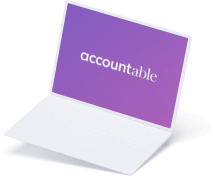
How to deduct your second-hand car
Read in 3 minutes
2020 ushered in some changes to the deductibility of car-related expenses, including that of used cars. We shed some light on this below, including what hasn’t changed: the VAT you can expect to recover on the purchase of a used car!
The deductibility of everything to do with your car is now based on its CO2 emissions. This applies to the purchase of your car and its amortisation, as well as to fuel, repairs, spare parts, the interest you pay on a loan to finance your car, etc.
Calculating the tax deduction
The tax deduction is calculated using the following formula, where you replace the coefficient by 1 for a diesel car, 0.95 for a petrol car, and 0.90 for a car that runs on CNG:
120% – (0.5% x coefficient x CO2/km)
🙌 A hands-free kit remains 100% deductible
This formula also applies if your car is second-hand!
Whether we’re talking about a new or used car, this formula is always applied to the proportion of professional use of your car. The only exception to this rule is if:
1. you are self-employed as an individual, and not as a company, and
2. you purchased or leased (as evidenced by a purchase order or leasing contract) your car before 1 January 2018.
In this case, the old system of deductibility – which worked in tiers – applies.
Amortisation of your second-hand car
Buying a car is a significant investment, and one you will benefit from over several years. Therefore, you don’t deduct the full price in the year you buy the car. Instead, you deduct a percentage of this price, based on how long you expect to use your second-hand car.
The amortisation of your used car is calculated using the purchase price, the percentage of professional use (excluding commuting to and from your place of work), your tax deductibility rate (using the formula above) and… last but not least… the percentage of the expected ‘useful life’ of your vehicle.
If your car has an expected useful life of three years and a tax deductibility rate of 61%, the amount you can deduct annually is calculated as follows:
€6,500 x 30% x 61% x 33% = amortisation to be deducted per year
It’s worth noting that, in the year in which you sell your car, or stop using it, you can’t deduct any amortisation.
Recovering VAT on your used car
When you buy a second-hand car, you can only ever recover part of the VAT… with a few exceptions.
Here’s how it works: you can recover up to 35% of the VAT in the case of a mixed-use vehicle, and for a commercial vehicle, such as a van, this rises to up to 85%.
Would you like to get back 100% of the VAT on your commercial vehicle? Then you need to be able to show that you use the van exclusively for business purposes, and that you don’t drive a single kilometre for private purposes.
Self-employed in a secondary occupation?
Like any self-employed person, you can deduct your car and car-related expenses according to the car’s deductibility rate, whether it’s new or second-hand. When calculating the amortisation, you need to take its useful life into account. Depending on what’s mentioned on your purchase invoice, you recover a little, a lot, or no VAT.
The difference with being self-employed in a primary occupation is your rate of professional use: you don’t use your vehicle for your entire working time. You always calculate your deduction on a pro rata basis according to your professional use of the car, excluding journeys between your home and your place of (self-employed) work.
Otherwise, you must be able to prove that you use the vehicle in question solely for your secondary activity, that it is perfectly suited to that purpose, and that you have alternative transport for your private life and your main activity.
When buying a car, it’s important to take all these factors into account because, in fact, they determine your budget! Once you’ve bought your car, our app allows you to keep all the related receipts in a safe place and, above all, to have them encoded in the right accounting category. Your VAT return is generated automatically based on this information!
Did you find what you were looking for?
Happy to hear!
Stay in the know! Leave your email to get notified about updates and our latest tips for freelancers like you.
We’re sorry to hear that.
Can you specify why this article wasn’t helpful for you?
Thank you for your response. 💜
We value your feedback and will use it to optimise our content.






